Abstract
Results from clinical isolations confirmed that mercury resistance is common among antibiotic-resistant strains of Staphylococcus aureus present in a large general hospital although the correlation is not as high as that found by Moore (1960).
The distribution of mercury-resistant strains among infections and carriers in surgical, medical, obstetric and geriatric patients and staff was studied. Attention was directed to the distribution among carriers since there are fewer extraneous factors operating among them, and a statistical analysis was made on the total number of mercury-resistant strains and the number of non-endemic strains; this latter figure was obtained by subtracting the dominant type 80/81, which is nearly always mercury-resistant and antibiotic-resistant, from the total. Analysis showed the geriatric patients to have a significantly higher proportion of mercury-resistant strains in both cases, and obstetric patients to have a significantly lower proportion when the total number of mercury-resistant strains was considered. Among the surgical, medical and staff categories, no significant difference in proportions could be found although a trend, in that order, of decreasing proportions of mercury-resistant strains present was noted.
In those cases infected on admission with tetracycline-resistant strains, although mercury-resistant strains still predominate, mercury-sensitive strains make a sizeable contribution. This is a reflexion of their dominance in the non-hospital environment.
Full text
PDF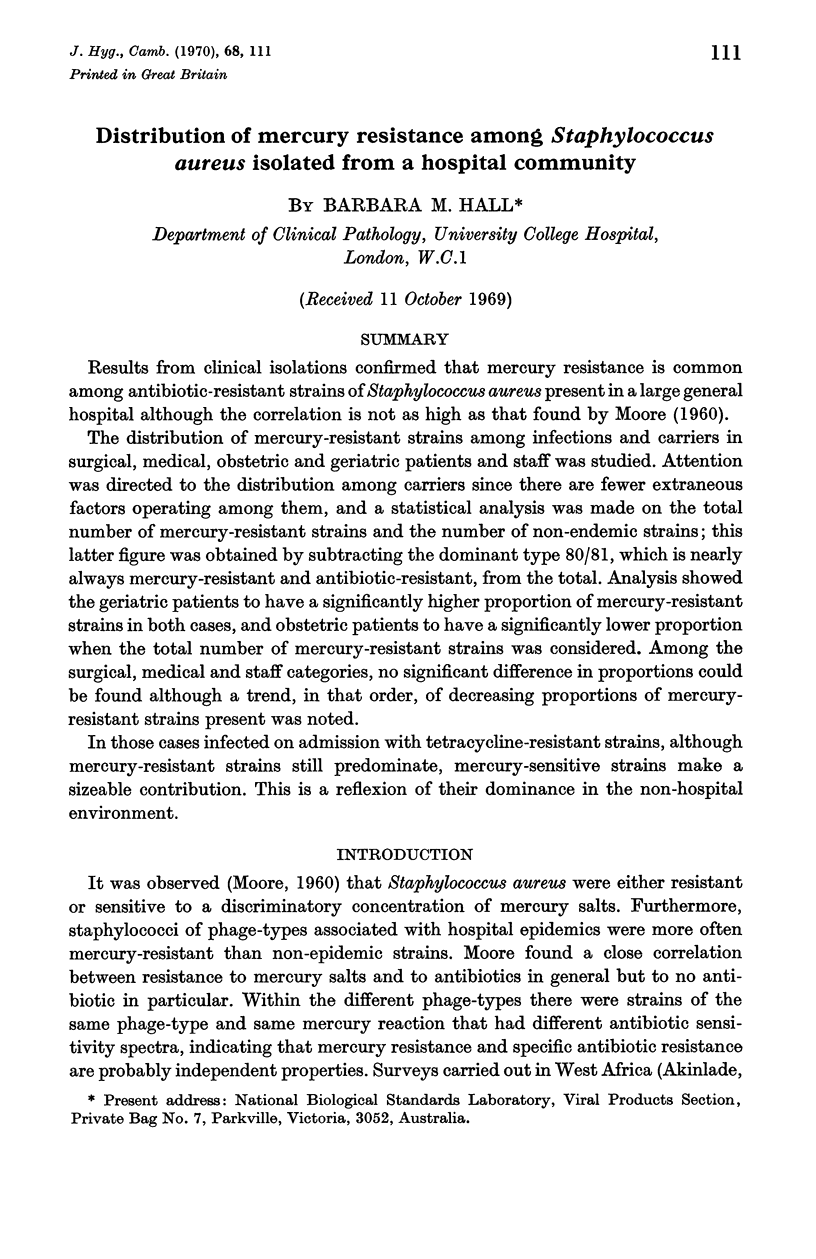
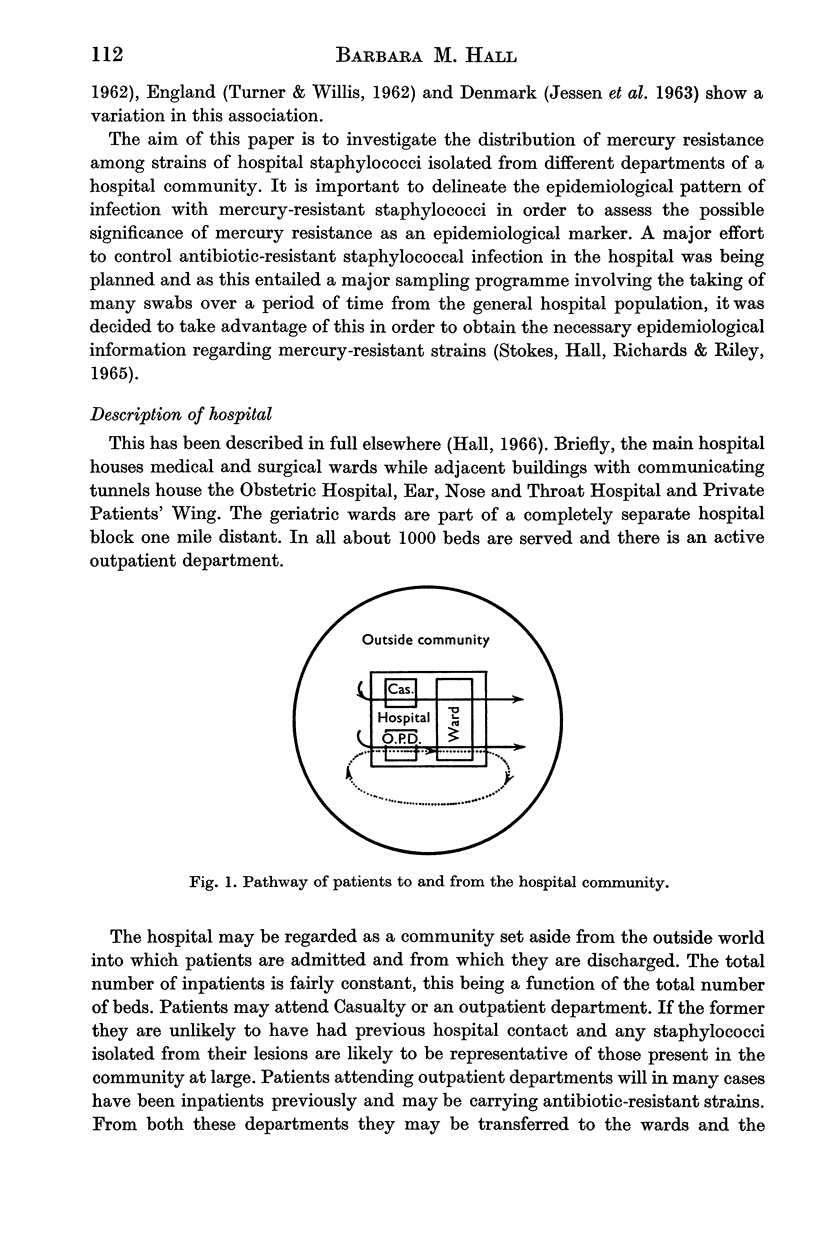
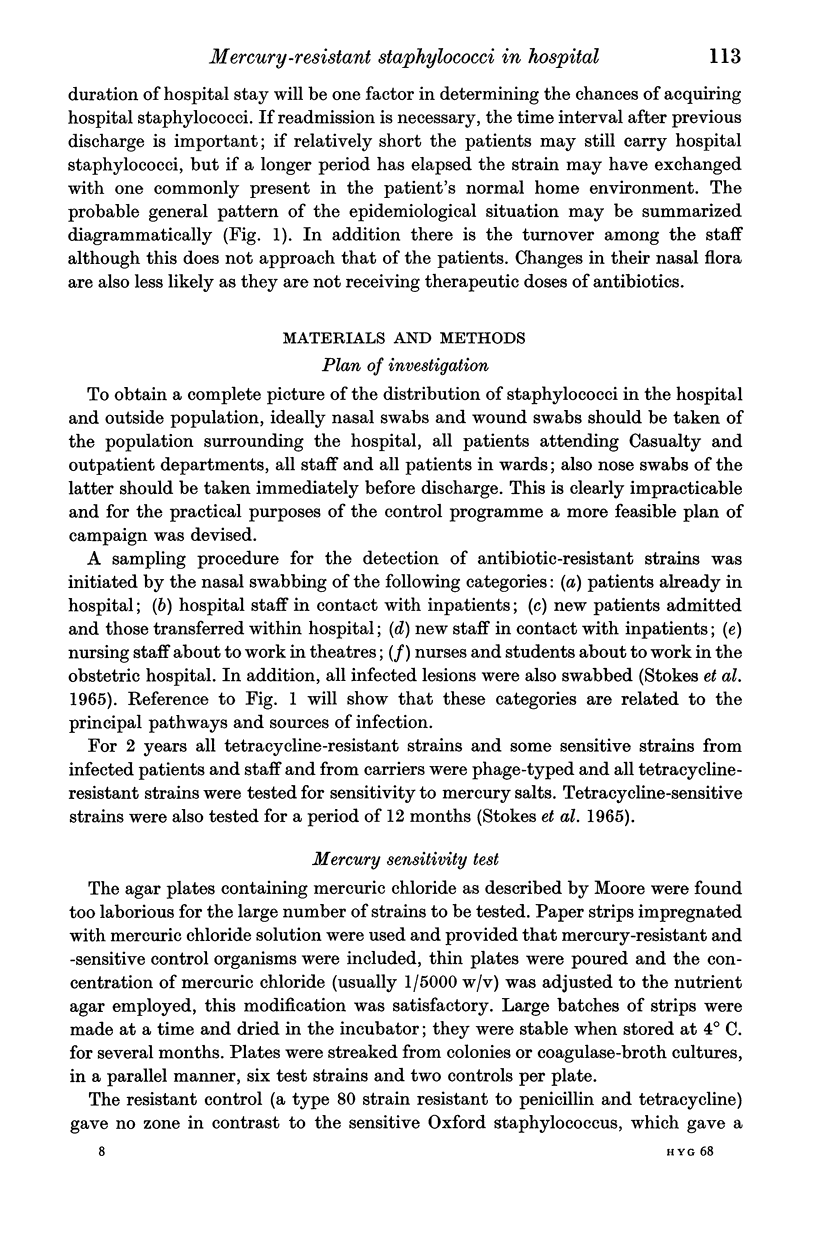
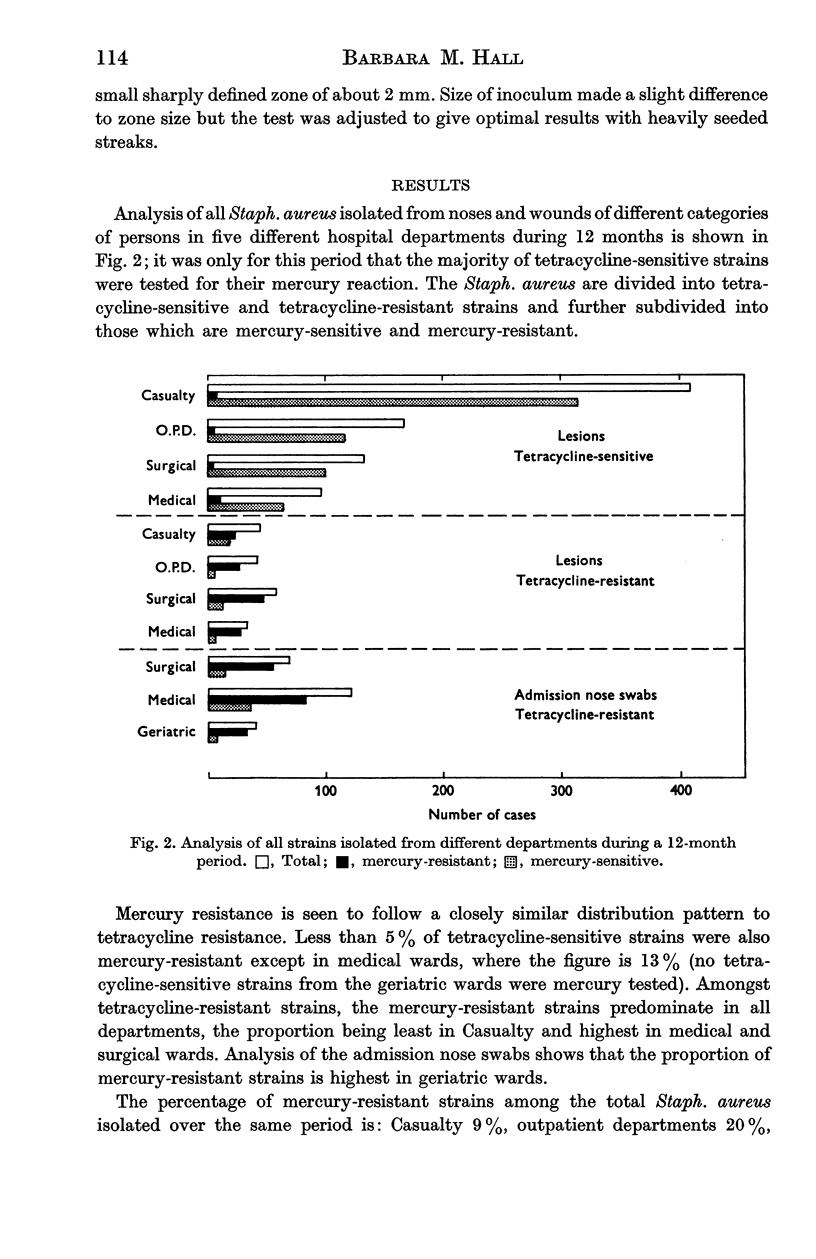
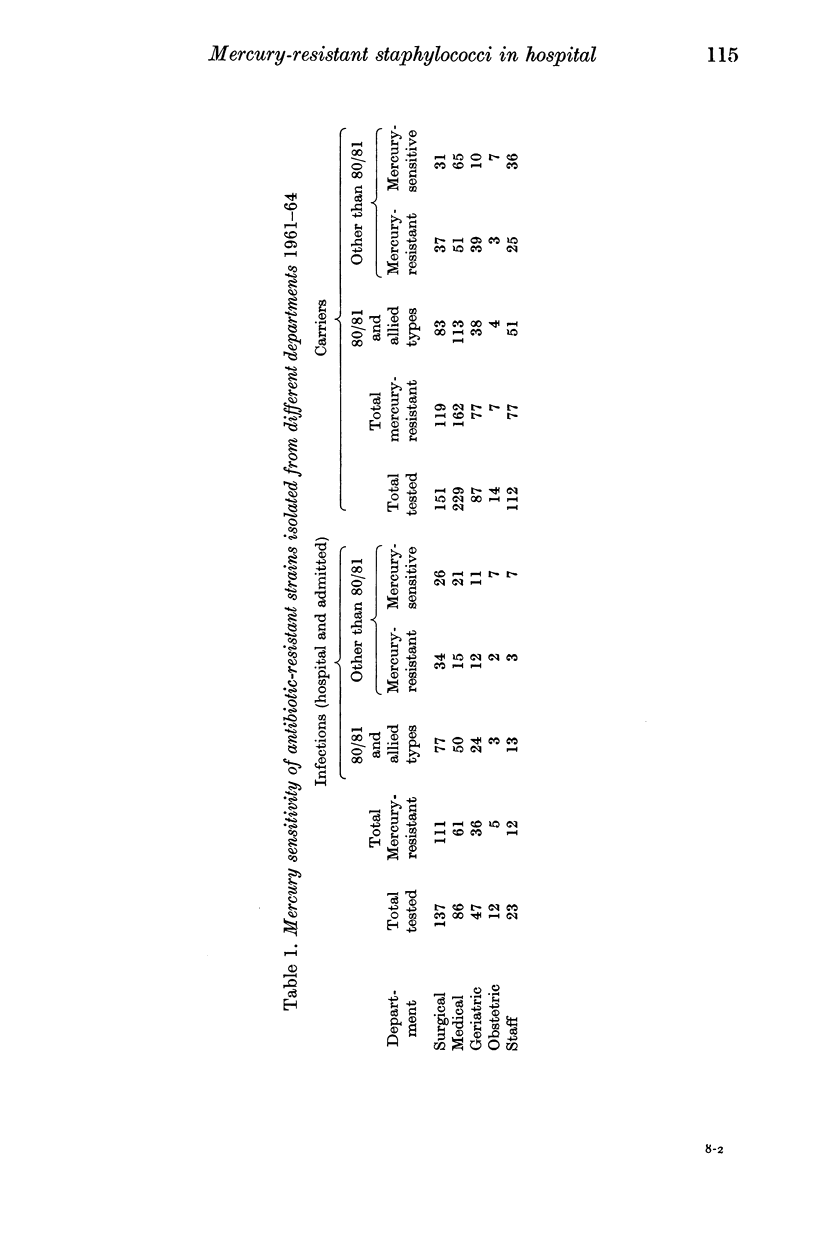
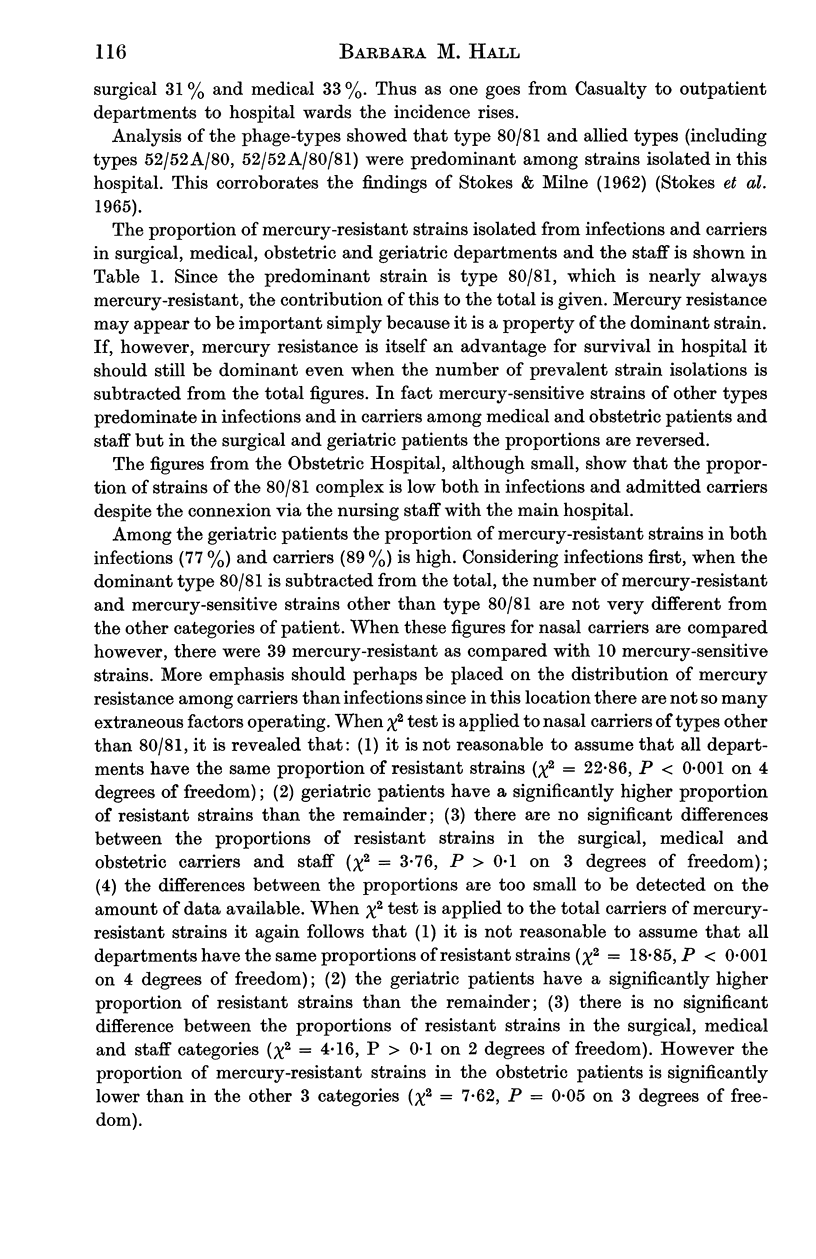
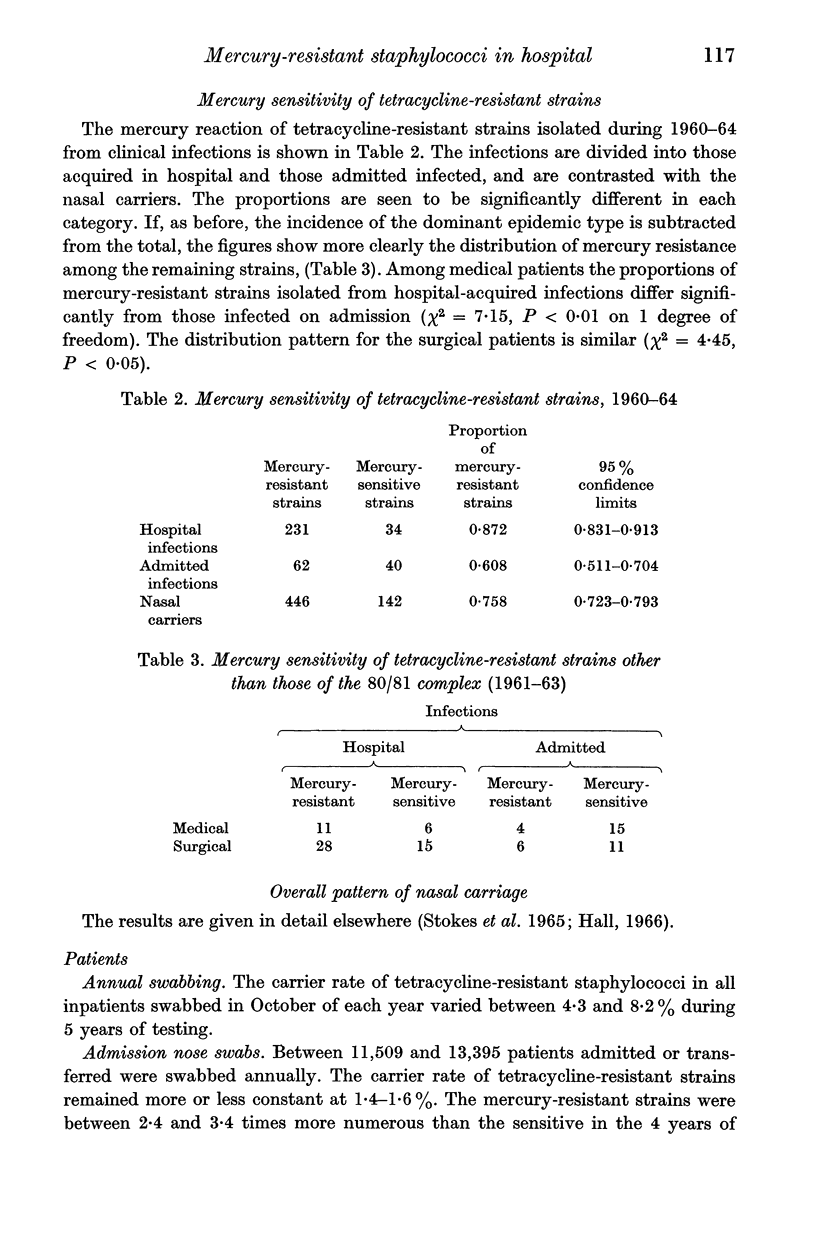
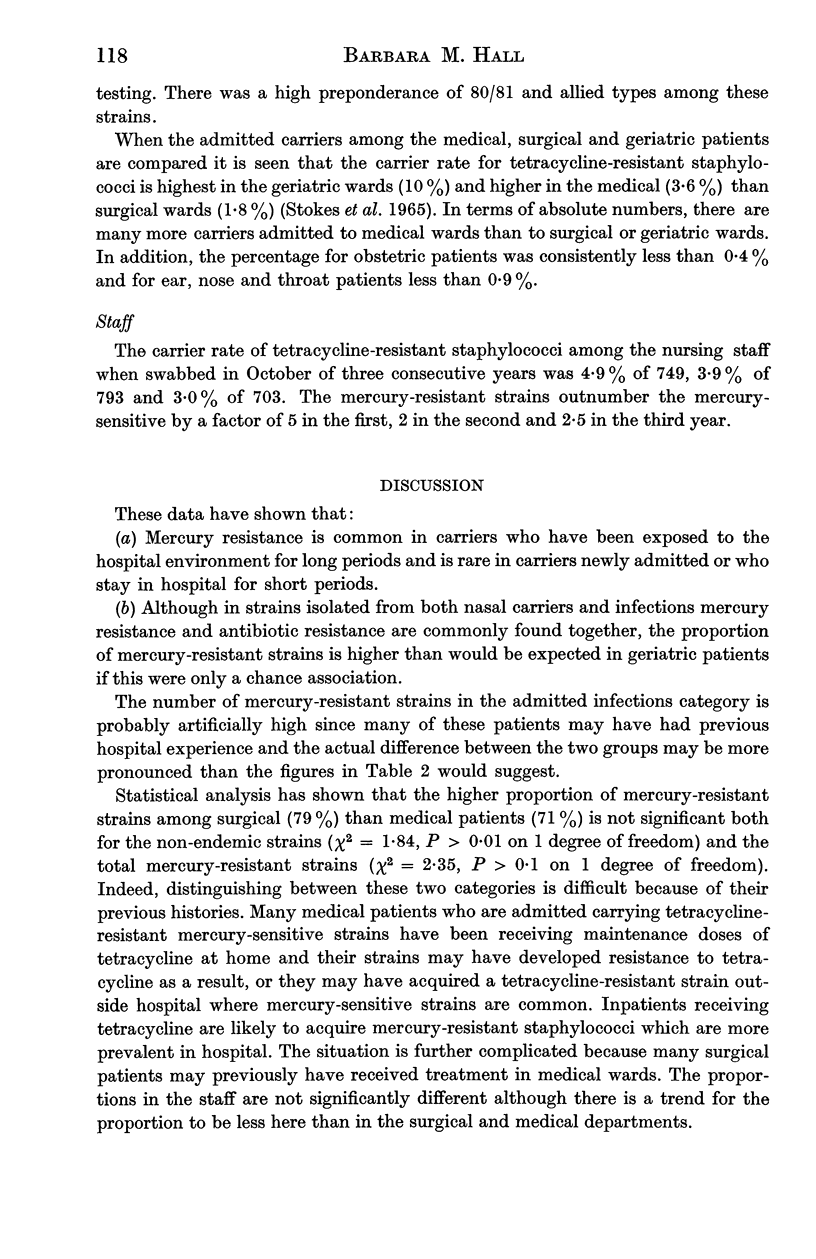
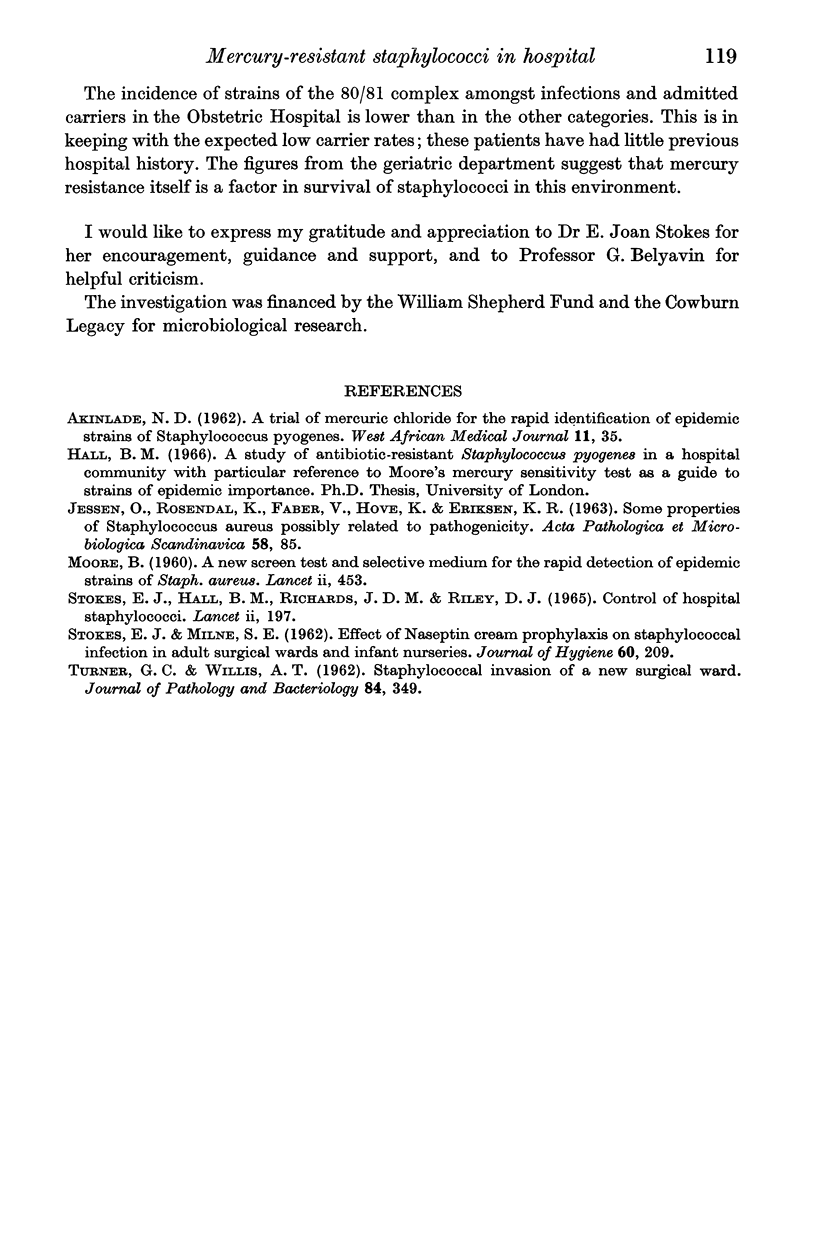
Selected References
These references are in PubMed. This may not be the complete list of references from this article.
- JESSEN O., ROSENDAL K., FABER V., HOVE K., ERIKSEN K. R. Some properties of Staphylococcus aureus, possibly related to pathogenicity. 3. Bacteriological investigations of Staphylococcus aureus strains from 462 cases of bacteraemia. Acta Pathol Microbiol Scand. 1963;58:85–98. doi: 10.1111/j.1699-0463.1963.tb04830.x. [DOI] [PubMed] [Google Scholar]
- MOORE B. A new screen test and selective medium for the rapid detection of epidemic strains of Staph. aureus. Lancet. 1960 Aug 27;2(7148):453–458. doi: 10.1016/s0140-6736(60)91591-9. [DOI] [PubMed] [Google Scholar]
- STOKES E. J., HALL B. M., RICHARDS J. D., RILEY D. J. CONTROL OF HOSPITAL STAPHYLOCOCCI. Lancet. 1965 Jul 31;2(7405):197–201. doi: 10.1016/s0140-6736(65)90691-4. [DOI] [PubMed] [Google Scholar]
- STOKES E. J., MILNE S. E. Effect of Naseptin cream prophylaxis on staphylococcal infection in adult surgical wards and infant nurseries. J Hyg (Lond) 1962 Jun;60:209–215. doi: 10.1017/s0022172400039474. [DOI] [PMC free article] [PubMed] [Google Scholar]
- TURNER G. C., WILLIS A. T. Staphylococcal invasion of a new surgical ward. J Pathol Bacteriol. 1962 Oct;84:349–358. doi: 10.1002/path.1700840209. [DOI] [PubMed] [Google Scholar]


